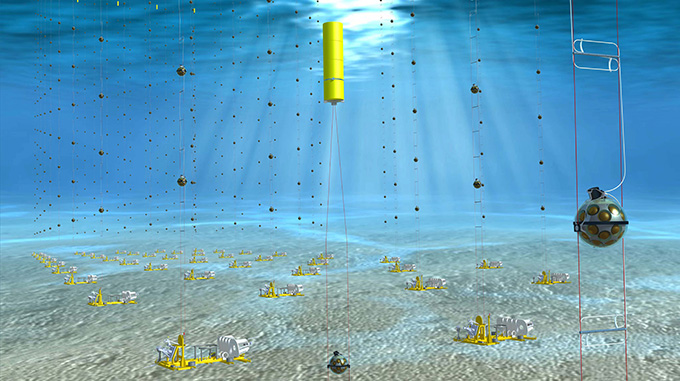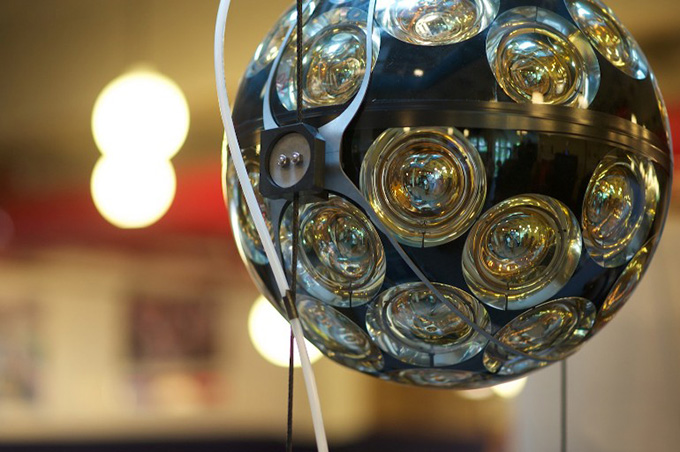Putting a telescope in space is one thing. Making two of them deep under the sea is a task in a championship of their own.
On a boat that bobing in the Mediterranean Sea, physicists – not usually known for their sea feet – bold weekly trips and rough waters, working around the clock to place telescope detectors.
Telescops are created to detect not light but neutrinos. These subatomic particles are sprinkled in high energy from the mysterious, unidentified sphere of space. But such high -energy neutrinos are so rare, and so secret that the detectors they study must be great. So scientists are wearing a cubic kilometer of the Mediterranean with light collection equipment designed to grab them.
“Weird is strange if you think about it. We want to make astronomy and see the universe that we put a telescope under water, ”says physicist Simone Biagi of the National Institute for Nuclear Physics in Catania, Italy.
This neutrino cubic kilometer, or km3net telescope consists of two telescopes consisting of glass baoubs arranged in vertical cables. Eachdo strand hangs on water like a pearl necklace that is up to 700 meters long. Eachdo Bauble, a 44 -centimeter -wide pressure resistant sphere, contains 31 photomultiplier tubes that understand the light generated when neutrinos fall into the seawater.

Researchers put detectors in a monthly campaign each year. At the end of the last campaign, in October 2024, telescopes boast of 57 strands. Eventually, hundreds of such cables will swing in the currents, a few kilometers below the surface on the coast of Sicily and in the south of France. “Really really like a forest, a underwater forest in total black because we are in the abyss,” says Astroparticles physicist Daniele Vivolo of the University of Campania “Luigi Vanviteli” in Italy.
The Sicilian telescope is created to study high -energy neutrinots from space. The French will study neutrinos from the atmosphere to understand how they swing, or differ from one type of neutrino to another (Sn: 10/6/15). The concept is similar to the Icecube Neutrino Observatory in the South Pole, which requires light on the ice than in the water (Sn: 6/29/23). Researchers are already using partly completed telescopes for science, for example, seeking quantum gravity effects on neutrinos and measuring neutrinos shakes.

During setting campaigns, scientists should be on top of their game. Secondo seconds on the ship costs approximately $ 1, Biagi says. “If you lose an hour doing stuff stuff, it has an impact on cost.” Tired of the strange hours of sleep, maybe the sea, they have to make critical decisions if something goes wrong, whether with devices or unfavorable weather.
A crane on the boat slowly lowers any strand, wrapped inside a 2.5 -meter release structure across the country, on the seabed. A distance -operated diving vehicle sinks down to make connections and inspect the equipment. With a pull of a handle from the divers, the strands begin to unfold. A Buoy swims thread up and the device rotates to release baoubles, like a Fern FROND opening.
Back to shore, other researchers control the performance of the device. Anyway should be addressed immediately. Once a strand is planted in the forest, there is no adjustment of screws or fiddling with connecting. “Likes how to send something to the moon,” Biagi says. Everything should be in perfect working condition at first. (An analogy, seems not enough. The telescope is like a forest, and a pearl necklace, and seed leaves, and the moon.)
“Typically, physicists find creative ways to answer complicated questions,” Biagi says. This research has brought physicists to other strange premises, such as South Pole or deep underground in mines. Life in the Mediterranean is not so bad in comparison. Sunsets and beautiful beaches come with the territory – and that is nothing to complain.
#Scientists #building #Neutrino #underwater #telescopes #Mediterranean
Image Source : www.sciencenews.org